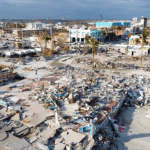When a natural disaster occurs, many communities are in crisis mode. Of course, once the disaster is over, recovery is supposed to begin. Without an effective communication plan in place however, many businesses either struggle to even start the recovery process, or they find the recovery process so challenging they end up shutting their doors for good.
In this post, we will discuss one of the key components (communication) within a successful business and how this component must be effectively planned for, especially in challenging circumstances.
Distribute Communication Channels
When disaster strikes, the seemingly logical main contact point for communication within an organization is the business owner or executive. However, putting only one person is charge for relaying all instructions is a risky prospect during a time of chaos.
A better strategy is to distribute the responsibility for business communication among multiple parties.
Having multiple contact points, perhaps a person within each department along with a backup for each one, provides companies with as much opportunity as possible to communicate with other employees and important customers, as well as provide status updates on social media channels, answers emails, etc.
A Central Location for Contact Information
If all employees were physically absent from your company, do you know how you would reach them?
Unless critical contact information such as cell and home phone numbers, email and home addresses, along with emergency contact information is all stored in the cloud, those in charge of keeping communication channels open face a steep uphill battle during a crisis situation.
Establish Communication Priorities
Of course, the first priority is to ensure that everyone working for the company is in a safe location. After that, it’s important to consider who to reach out to first.
It may be vendors for some companies, clients for other companies, or perhaps a mixture of both.
The main point is to have a complete plan that entails all the details regarding who to reach out to and when.
Identify Critical Information
After a period of time, both employees and vendors will want to know when they can expect to receive payment.
Other important details such as when employees are expected to report back to work, at what point should delivery services resume, and when the business will be open to the public, are all items that must be planned for in advance.
Present the Plan{{cta(‘3ba12fff-6606-4c80-8093-2d474ad3329e’,’justifyright’)}}
Once a company completes their disaster recovery communications plan, they then need to present the plan to all interested parties. Companies should expect to meet with their employees to discuss the plan and everyone’s assigned responsibilities.
Conducting a drill so everyone can see how the plan is supposed to work, before a real disaster strikes is a good way to work out any glitches in the plan.
If you would like more information about creating a disaster recovery communications plan for your organization, please contact us, or get the Comprehensive Guide to Disaster Recovery eBook here!













